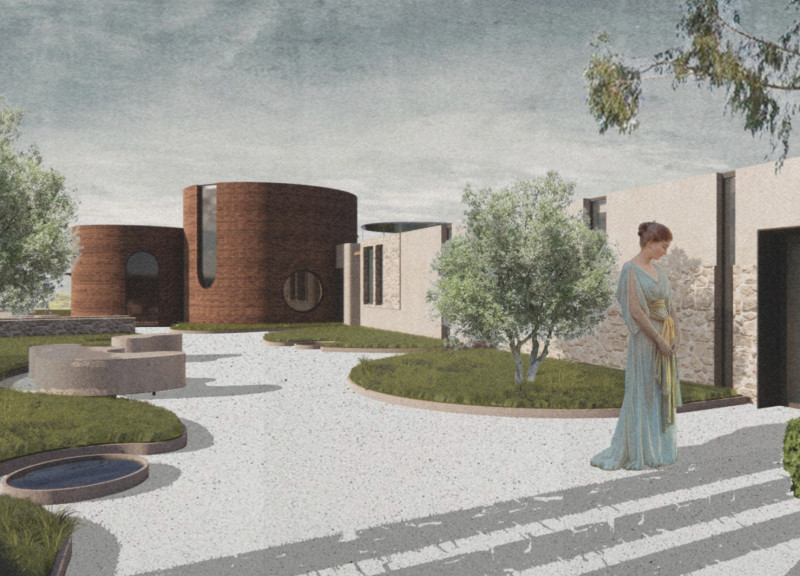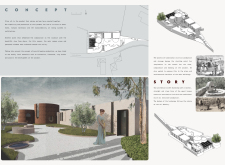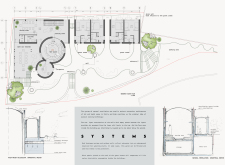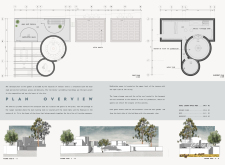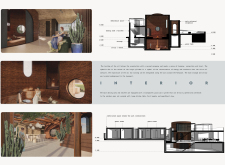5 key facts about this project
### Overview
Located in a context steeped in olive oil production, the design of the facility emphasizes the cultural and ecological significance of this natural product. The intent is to create a harmonious space that reflects the values of simplicity and sustainability inherent to olive oil. The architecture takes advantage of the site’s panoramic views, orienting key communal areas toward the valley to foster a connection with the surrounding landscape.
### Spatial Organization and Aesthetics
The facility's layout comprises various functional zones, including guest accommodations, communal dining spaces, and educational areas focused on olive oil production. A central round dining room is designed to facilitate communal engagements typical of olive oil tastings, while the reception area serves as a transitional space linking outdoor and indoor experiences. Guest rooms are thoughtfully arranged to provide multiple access points and views of the garden.
Two cylindrical buildings evoke the form of traditional olive oil mills, serving both symbolic and aesthetic purposes. The organic curves and circular elements of the design enhance the visual connection to the landscape, reflecting the nature of olive oil itself. Outdoor spaces, such as terraces and meditation areas, complement the built environment and encourage interaction with nature, while strategic landscaping incorporates native plants and sustainable irrigation methods.
### Sustainable Practices and Technological Integration
The design emphasizes sustainability through the use of locally sourced materials, including travertine, limestone, clay bricks, and wood, thereby minimizing transportation emissions and reinforcing a connection to the local environment. Systems for rainwater harvesting and carefully positioned solar panels promote resource efficiency.
Natural ventilation is achieved through dual-layer wall construction reminiscent of ancient techniques, allowing for effective air circulation and enhancing indoor air quality without mechanical systems. Technological features, such as a glass wall system in the dining area, further enhance the interaction between indoor and outdoor spaces, fostering a sensory experience during events.
The project not only serves as a functional space for olive oil production but also functions as an educational platform, offering insight into the craft's history and significance. Its thoughtful integration of sustainability and community-oriented design presents a modern interpretation of traditional practices within the cultural landscape.


